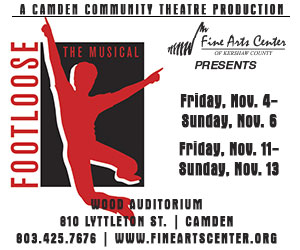Michael Krajewski- Raw
In the world of auto-didacts, it isn’t difficult to find visual artists. While pedagogy is essential to dancers and musicians, no matter what their natural talents and inclinations, some visual artists are naturals in the true sense of the word. They pick up a paintbrush or a piece of chalk, or sink their hands into a ball of clay, and almost mystically, something profound or beautiful appears. Michael Krajewski is one of these artists.
Though he started drawing in the fourth grade – “strange characters and weird shit,” he says – Krajewski felt no desire to go to college after high school to further his education in art. Instead, he traveled to Athens with friends who were attending the University of Georgia, where he both painted and partied a lot, bussed tables, and paid $50 a month to rent half a room in a shared apartment. Tiring of the bar scene, he moved to Atlanta where there would be fewer distractions from his art. Converting his dining area into a studio, the young artist painted on anything he could find, from cardboard to wood, and began experimenting with his work. “I had no clue what a solidified piece was,” he says of his art at the time. “I was testing my skills to see what I had. It was a lot more controlled than my work looks now. But when I look back, I can see that even though I was just playing, it felt really good.”
Looking back also allows the artist to comment on how much harder it is now to control his brush and his stroke. “I don’t want that slick stroke anymore – that stroke that comes too easy,” he says. “I watch little kids painting and think: ‘If I could just have the stroke of a child and have it come as easily to me as it comes to them, that would be perfect.’”
Krajewski’s time in Atlanta, crammed into a tiny studio apartment with dozens and dozens of finished paintings stacked up, one against another, proved to be both perfect and suffocating at the same time. “I would have to go into the bathroom and sit on the edge of the tub just to get away from all the painting sometimes,” he remembers. At other times he would prop his paintings on the curb by the road, with loose change and a note taped to the back, asking any takers to call him; just to see what would happen – just to find out what people thought of his art. “One guy called me, and we went out for a beer,” he says. “It was pretty cool.”
It was on a visit to see his parents in Columbia about six years ago, Krajewski remembers, that he went into a bar in Five Points with a friend who noticed a sign saying that a gallery called Artists’ Basement was opening beside Goatfeathers on Divine Street. His friend urged him to send in a disc with his work on it. He followed through and was “shocked” to have his work put in a group show and even more astounded when several of his pieces sold.
A solo show in the same gallery followed at which, out of 78 pieces, 23 sold. “I was terrified,” he admits, shaking his head and shrugging to himself. “I now know that I priced everything too low, but I had no idea what I was doing. I just wanted people to see my work.” People did and, before he knew it, they started following him and asking for more. He moved back to Columbia and was asked by Sonia and David Dunn to do another solo show. “I was so crazy,” he recalls. “They asked me for my bio so I wrote out individual copies of it on all these little papers,” he says. “I actually think people liked that.”
Ever the advocate for artists donating their works for charitable causes, Krajewski recognized early on the value of the exposure that charity shows can offer to young artists in return for their donations. It was at one such show that he first spoke with an admirer who had been following his work – had actually previously bought a painting – who would eventually become his mentor and advocate, Alice Perritt, president and owner of HoFP Gallery. “Alice took me outside and she told me that she liked my work – it surprised me,” he recalls. “And then she started asking me questions, like whether I drank a lot or not. I felt some kind of energy from her and I thought, ‘she’s serious.’ I guess she was making sure that I wouldn’t go down deep into some hole or something. But I told her, ‘yeah, I love to drink and party,’ which was the truth. She looked at my work and critiqued it, and I got this intense feeling from her. I mean, I love her now, but she was intimidating at first.”
“I was struck by how fresh his work was,” Perritt recalls. She had previously purchased the painting, 101 Birds, by Krajewski and found it to offer “such an interesting point of view. The painting shows a woman, but only her skirt and her feet, and there are all these little birds flying around everywhere. It was just so very different.” 101 Birds was the first piece Perritt had discovered by the artist, but today she owns more than half a dozen of his pieces, all of which were purchased before the friends entered into their professional relationship. Perritt now represents Krajewski’s work at her gallery on Divine Street, and has overseen the most recent portion of his maturation as an artist.
“I think Michael is as much a personality as an artist,” she explains. “His connection with the public goes a long way in promoting his art. He is a kind person and he collects friends like they are charms.”
Though self-taught, Krajewski admits to learning much from some of the friends and artists with whom he has collaborated over the years. First and foremost, among those artists is videographer, Jason Stroud. “I love his videography and I love his style,” Krajewski says. “He likes to keep pushing himself and I love that in a person, whether it’s an artist or a friend.” Stroud and Krajewski have collaborated on a number of short films and installation projects.
That said, the still young artist, (Krajewski is 28, but he doesn’t like for people to know his age), is hesitant to comment on whose work he likes in town or who he likens his own work to. But when confronted with the similarity of his style to that of the neo-expressionist/graffiti artist, Jean-Michel Basquiat, he admits he can see the likeness. He also recognizes that some people see hints of Marc Chagall in his work, particularly his color palette.
At such a young age it isn’t surprising that Krajewski has had an “emotional year” with highs and lows that left the kind of life-lesson scars he’ll likely cherish one day. The death of a grandparent almost devastated him – “my mind went so numb I was in shock,” he says – and the opportunity to teach for the first time at the South Carolina Governor’s School for the Arts and Humanities summer program – “I don’t know if I have ever been so inspired,” he admits – have left the artist keenly aware of life’s bitter-sweet peculiarities. “I’m not really sure of what I want out of life now,” he says. “I enjoy where I’m at, at this exact moment in time, and I like what’s in front of me. I don’t want to worry about what happens – that makes the happening less sweet.”
But the recent ups and downs have influenced his work: of that, his friend and representative, Alice Perritt, is well aware. “Michael’s work is so autobiographical,” she says. “He is writing the story of his life on the canvasses he creates.”
Let’s hope, for Krajewski’s sake and the many followers who enjoy his art and his friendship, that it’s a slow-winding odyssey, with numerous chapters, and many, many canvasses long.
— Cynthia Boiter






.jpg)
